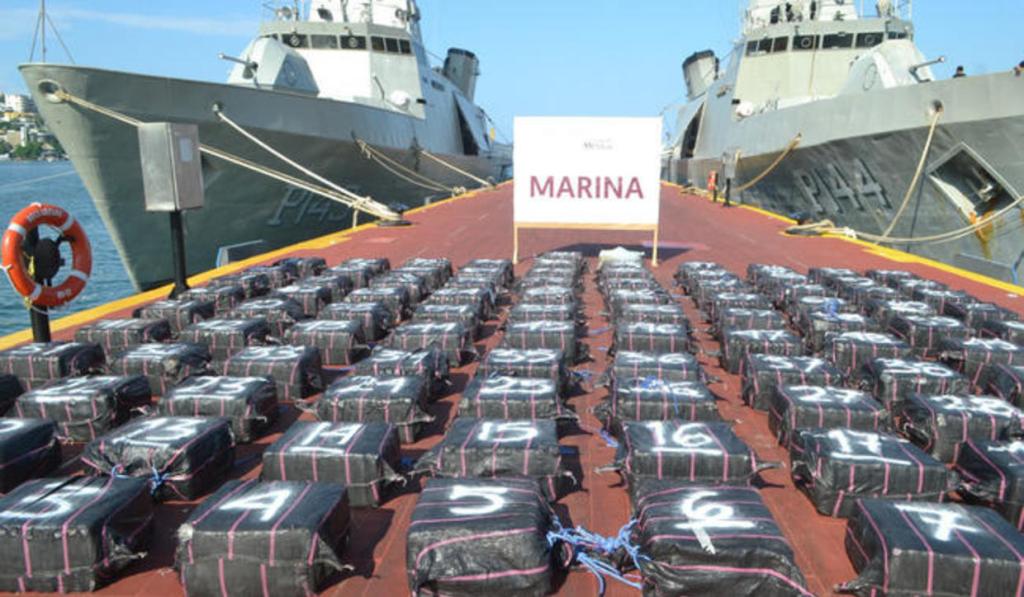A “narco sub” loaded with nearly 8,000 pounds of cocaine was intercepted en route to the United States this week.
The Mexican Navy captured the vessel and its nine crew members in the Pacific Ocean on Tuesday after monitoring it with aerial and maritime surveillance. The “go-fast boat” used by the traffickers was a semi-submersible vessel, which is favoured by drug runners as they’re can be more difficult to detect than your average speedboat.
Videos by VICE
Mexico’s Navy has stepped up its role in the drug war in recent years, with the interception of drug shipments becoming one of its major priorities. This seizure was the latest in a long list of operations this year, which combined have netted thousands of pounds of cocaine.
Dr. Raúl Benitez-Manaut, a National University of Mexico professor, said the Navy “has become the most trusted Mexican intelligence service for the DEA and DIA” over the last decade.
That may well be the case, but even with all these cocaine hauls, the sheer scale of the drug trade into the United States is staggering. Estimates suggest that hundreds of tons of cocaine flow across US borders annually, with federal agencies managing to intercept only a fraction of the total amount.
So really, what does this big bust mean for the US cocaine supply? Absolutely nothing.
The demand from the millions of Americans who use cocaine fuels a multibillion-dollar industry, which in turn powers violent cartels that inevitably adapt and evolve despite law enforcement’s best efforts. Trillions has been spent on these efforts, yet analysis from the International Drug Policy Consortium last year showed that more people are using drugs than ever before.
With all that mind, many critics understandably argue that the War on Drugs has proven ultimately futile. And while these busts might have made for a decent photo opportunity, they won’t make the smallest dent on supply.




